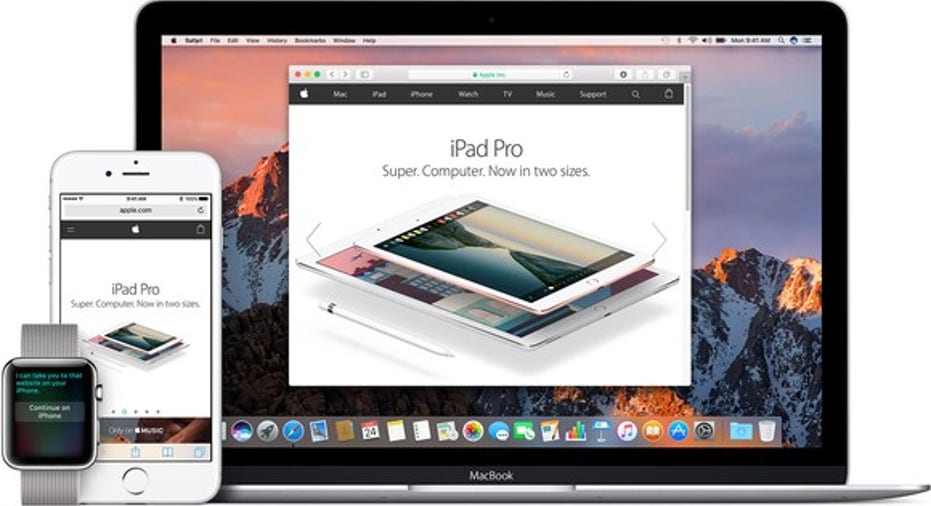More iPhones, Less Profit

After three quarters of declining revenue and iPhone sales, Apple (NASDAQ: AAPL) managed to return to growth during its first fiscal quarter. Not only that, Apple put up some record numbers. Revenue was $78.35 billion, up 3.3 % year over year and a new quarterly record. EPS grew 2.4% to $3.36, also a new quarterly record.
iPhone unit sales surged 5% to 78.3 million, the most ever in a single quarter. The company also set all-time revenue records for services, Mac, and Apple Watch. There was a lot to like. Apple stock surged the following day, with investors relieved that fears of a continued slide in sales were overblown.
While Apple put together a fine quarter, the company's results aren't quite as good as they seem.
Image source: Apple.
A profit decline
Apple managed to grow its per-share earnings during the first quarter, but a quick look at the income statement reveals a different story. Apple increased its revenue by $2.48 billion compared to the first quarter of last year, but cost of sales, the cost of producing its products, surged $2.73 billion. Gross profit declined by a little less than 1% as a result.
So Apple sold more devices, but it accepted a lower gross margin, and none of that extra revenue flowed through to the bottom line. This gross profit decline and a 9% increase in operating expenses led operating income to drop 3.4%. Net income slumped by a smaller 1.6% thanks to an increase in other income, which includes income for interest and dividends, among other items.
Apple was able to grow its EPS because of its expansive share buyback program. The company's diluted share count declined by 4.8% year over year, fueled by billions of dollars of share buybacks. Apple spent $10.9 billion on share buybacks during the first quarter alone, an 57% increase compared to the prior-year period.
To be fair, Apple still generated $17.9 billion of net income during the quarter, a staggering sum. But the fact that profit and revenue are moving in opposite directions should be a concern for investors. There's nothing wrong with share buybacks, especially when cash continues to pile up. But they're the only reason Apple was able to set an EPS record.
An extra week
Did you know that Apple's first quarter this year had 14 weeks, compared to 13 weeks in the first quarter last year? If you only read Apple's press release, this fact may come as a surprise. Amongst all the talk of records, there's no mention of the extra week. You would have had to delve into the 10-Q or listen to the conference call in order to find recognition of this substantial tailwind.
If you just take the numbers and adjust them for this extra week, the quarter doesn't look so good. Revenue would have slumped 4.1%, iPhone unit sales would have declined 2.8%, and operating income would have tumbled 10.3%. This is a simplistic way to adjust for the extra week, as sales weren't spread out uniformly throughout the quarter. But it gives a sense of how significant an extra week can be.
During the conference call, CFO Luca Maestri pointed to four factors that offset this extra week. Slower growth of China inventory, an earlier launch of the iPhone 7 compared to the iPhone 6s in the previous year, a stronger U.S. dollar, and a patent infringement payment in the first quarter of last year all hurt the company's results relative to the prior-year period.
Maestri doesn't say by what degree these factors offset the extra week, and in the absence of an extra week, they would have read like a list of excuses. Adjusted for that extra week, Apple's first quarter wasn't as solid as the headline numbers suggest. It almost certainly wasn't as bad as my simplistic calculation above, but it puts an asterisk next to Apple's numbers.
The good news for Apple investors is that the company's guidance for the second quarter was positive. Apple expects to produce between $51.5 billion and $53.5 billion of revenue, up from $50.6 billion during the second quarter of last year. Gross margin is expected to decline, which will again pressure Apple's bottom line. But the major sales declines of the past few quarters appear to be in the rearview mirror -- at least for now.
10 stocks we like better than Apple When investing geniuses David and Tom Gardner have a stock tip, it can pay to listen. After all, the newsletter they have run for over a decade, Motley Fool Stock Advisor, has tripled the market.*
David and Tom just revealed what they believe are the 10 best stocks for investors to buy right now... and Apple wasn't one of them! That's right -- they think these 10 stocks are even better buys.
Click here to learn about these picks!
*Stock Advisor returns as of January 4, 2017
Timothy Green has no position in any stocks mentioned. The Motley Fool owns shares of and recommends Apple. The Motley Fool has the following options: long January 2018 $90 calls on Apple and short January 2018 $95 calls on Apple. The Motley Fool has a disclosure policy.